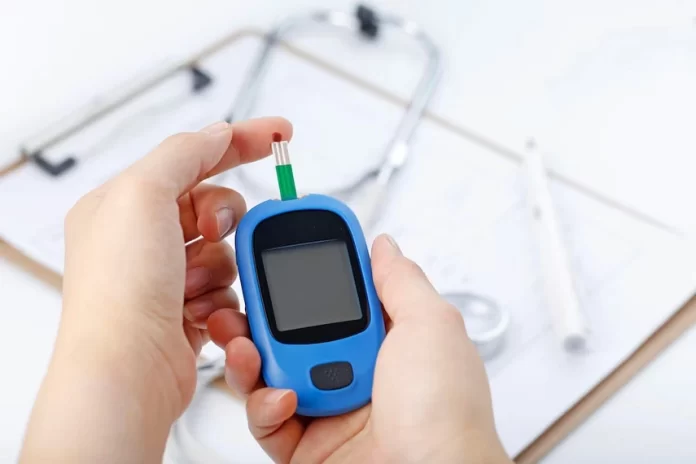Diabetes is a chronic health condition that affects millions of people worldwide. It occurs when the body is unable to properly process and use insulin, a hormone that helps regulate blood sugar levels. This can lead to a buildup of glucose in the blood, which can have serious health consequences if left unmanaged.
One of the most important tools for managing diabetes is understanding and monitoring blood sugar levels, which can be done using a sugar level chart. In recent years, there has been growing interest in the possibility of reversing diabetes, and research has shown that certain lifestyle changes can help improve insulin sensitivity and lower blood sugar levels.
What is a Sugar Level Chart?
A sugar level chart is a tool used to track and monitor blood sugar levels over time. It typically includes information on target blood sugar levels, as well as normal and abnormal ranges for different times of the day. For people with diabetes, monitoring blood sugar levels is essential for managing the condition and preventing complications.
Tracking Blood Sugar Levels
Tracking blood sugar levels involves regularly measuring glucose levels in the blood, typically through a finger prick test. Blood sugar levels can vary depending on factors such as diet, physical activity, stress, and medication usage. By tracking blood sugar levels over time, people with diabetes can identify patterns and trends, and make adjustments to their treatment plan as needed.
Target Blood Sugar Levels Target blood sugar levels vary depending on the individual and their type of diabetes. In general, people with diabetes should aim to keep their blood sugar levels as close to normal as possible. For people with type 2 diabetes, target blood sugar levels may range between 70-130 mg/dL before meals and less than 180 mg/dL two hours after starting a meal.
For people with type 1 diabetes, target blood sugar levels may be slightly tighter, generally around 80-130 mg/dL before meals, and less than 180 mg/dL two hours after starting a meal. These ranges may be different depending on the individual and what their doctor recommends
Normal and Abnormal Ranges
Normal blood sugar levels for people without diabetes typically range between 70-100 mg/dL. However, blood sugar levels can vary depending on the time of day and recent meals. Abnormal blood sugar levels include:
- Hyperglycemia: Blood sugar levels above the target range, often due to lack of insulin or resistance to insulin.
- Hypoglycemia: Blood sugar levels below the target range, often caused by too much insulin or other diabetes medications.
Diabetes Reversal: Is it Possible?
In recent years, there has been growing interest in the possibility of reversing diabetes. While there is currently no cure for diabetes, research has shown that certain lifestyle changes can help improve insulin sensitivity and lower blood sugar levels.
Lifestyle Changes
Making lifestyle changes such as eating a healthy diet, increasing physical activity, and losing weight can help improve insulin sensitivity and lower blood sugar levels. For example, a diet that is high in fiber and low in refined carbohydrates can help improve glucose metabolism and lower blood sugar levels. Similarly, regular physical activity can help increase insulin sensitivity, which can lower blood sugar levels.
Medications and Supplements
Medications such as metformin and GLP-1 receptor agonists can help lower blood sugar levels and improve insulin sensitivity. Some supplements such as omega-3 fatty acids, chromium, and magnesium have been found to have blood sugar-lowering effects as well.
Weight loss surgery
Weight loss surgery is one option for diabetes reversal. Studies have found that weight loss surgery can lead to a significant improvement in blood sugar control and even diabetes reversal in some patients with obesity and type 2 diabetes. By promoting weight loss and improving insulin sensitivity, weight loss surgery can help improve blood sugar control and reduce or eliminate the need for diabetes medication
Conclusion
Understanding and monitoring blood sugar levels are essential for managing diabetes. A sugar level chart is a useful tool for tracking blood sugar levels over time and identifying patterns and trends that can help inform treatment decisions.
While there is currently no cure for diabetes, research has shown that certain lifestyle changes and treatments can help improve insulin sensitivity and lower blood sugar levels. These changes can even lead to what is known as diabetes reversal.
Diabetes reversal is a sustained reduction in HbA1c (a measure of blood sugar levels over time) to levels that would no longer meet the criteria for diabetes, without the use of diabetes medication. Achieving diabetes reversal is highly individualized and may not be possible for all.
Diabetes reversal is not the same as cure. Even if someone can achieve diabetes reversal, they will still need to continue monitoring their blood sugar levels and maintaining healthy lifestyle habits to prevent diabetes from returning.






